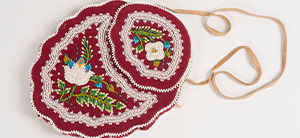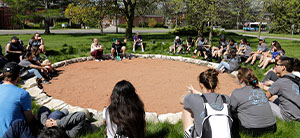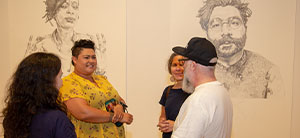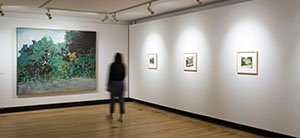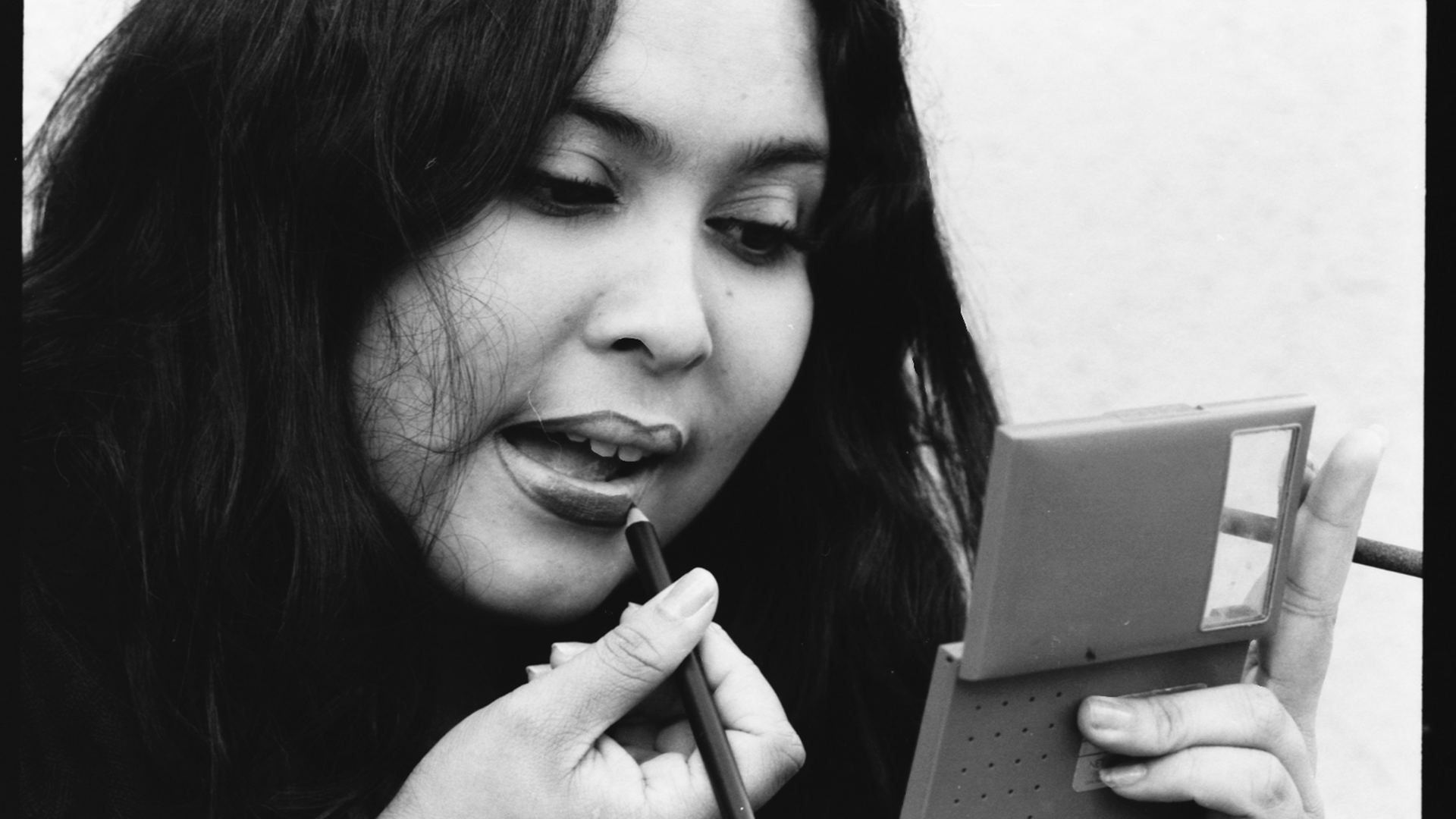
Do You Remember Love
Native Art Department International (NADI)
Curated by Native Art Department International (NADI), Do You Remember Love brings together artist Susan Mogul’s 1997 video I Stare at You and Dream with a collection of quillboxes from the Museum on Tower Hill in Parry Sound. Juxtaposing these disparate forms of expression, the installation draws out themes across the two bodies of work, including women’s identity, family, relationships, and the quest for home.
Filmed in Mogul’s Highland Park neighbourhood, a predominantly working class Latino area of Los Angeles, the film revolves around the intersecting lives of four people, including the artist, offering an intimate, intertwined narrative that explores familial and romantic relationships as well as how our past informs our present. Mogul’s video is rooted in shared history and enduring relationships, as is the collection of quillboxes. Posing the question “do you remember love?”, the exhibition positions the handmade quill and birchbark boxes as not only expressions of love but as acts of love for self, place, and one another that are to be recalled, enacted, and remembered.
Do You Remember Love, like many of NADI’s curatorial projects, is both a provocation and an invitation, prompting new ways of seeing through connections and intersections. Presenting collections alongside the work of an individual artist, moving image alongside traditional quillwork, the exhibition demonstrates the way ideas and expression span borders, uniting individual and collective.
Susan Mogul, I Stare at You and Dream (production still), 1997, video, 56:40 mins. Photo: Rhoda Blate Mogul. Video: Courtesy of the artist and Video Data Bank at the School of the Art Institute of Chicago

Organized and presented by the Art Gallery of Guelph with the support of the Ontario Arts Council, an agency of the Government of Ontario.
Gallery
About the artist
Susan Mogul
Having been involved with video since the early 1970s, Susan Mogul is a pioneer of the medium. Initially producing an important series of humorous and staunchly feminist performance videos, her practice quickly expanded to more experimental forms of narrative, including feature length work. Mogul has received grants including a Guggenheim Fellowship, ITVS commission, National Endowment for the Arts Fellowship, Getty Trust Fellowship, and a Center for Cultural Innovation grant. A survey of Mogul’s video/films took place in Vienna at the Austrian Film Museum in 2024 and her first solo museum exhibition opened August 2022 at the Zacheta National Gallery of Art in Warsaw, Poland. Less is Never More, a solo installation was presented at as-is-la gallery in Los Angeles in 2019. Mogul’s work has also been featured in historic exhibitions including California Video at the Getty Museum, Los Angeles: Birth of an Art Capital at the Centre Pompidou in Paris, and Where Art Might Happen: The early years of CalArts at the Kunsthaus Graz in Austria. A retrospective of her work was presented at Visions du Reel Film Festival in Switzerland in 2009 and her 2008 feature length documentary, Driving Men, screened in international competitions in Japan, Italy, Portugal, Switzerland, and India. A major essay in the 2020 summer issue of the Los Angeles arts quarterly, X-TRA, titled, “A Feminist’s Survival Index”, reviewed Mogul’s current work, positioning it in the context of the history of feminist art. Women of Vision: Histories in Feminist Film and Video also devotes a chapter to Mogul’s work and career.
About the curator
Native Art Department International (NADI)
Native Art Department International is a collaborative long-term project created and administered by Maria Hupfield and Jason Lujan. Working across platforms, NADI’s projects and exhibitions prioritize kinship, relationality, and non-competition in order to liberate artists, artworks and aesthetics from classifications ingrained in systems of power and interpretation. Their multi-disciplinary practice comprising performance, sculpture and video engages collaborative approaches to bypass essentialist readings of artworks and reject reductionist positions projected onto the work of Indigenous cultural producers. Their projects, as a result, circumvent easy categorization by comprising diverse forms such as curated exhibitions, video screenings, panel talks, collective art making, and an online presence, all sharing an undercurrent of positive progress and emancipation through cooperative alliances. Working across international contexts while consistently prioritizing being in relationship to place, they describe their work as “focusing on communications platforms and art-world systems of support while at the same time functioning as emancipation from essentialism and identity-based artwork.”
View More Exhibitions
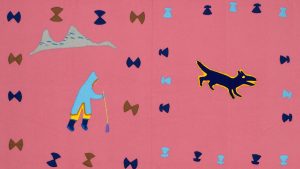
exhibition
September 18.2025 / January 4.2026
Explore vibrant landscapes from the AGG’s permanent collection that use colour not only as a formal strategy, but as a way of relating to Nonhuman life, Land, Water, one another, and to the self.

exhibition
September 18.2025 / January 4.2026
Through practices that span net art, interactive sculpture, installation, video, and textile, Soft Internet Theory invites audiences to consider a gentler, more human digital future.

exhibition
September 18.2025 / January 4.2026
Challenging colonial conceptions of how Land and Water are used, valued, and protected, Reworldings speaks to living relationships with place and peoples, to the interdependence of species and systems, and to the urgent need to restore not only ecosystems, but justice.

exhibition
September 18.2025 / January 4.2026
Explore how artists reimagine landscapes shaped by industry and urbanization, challenging our ideas of nature, beauty, and human impact on the environment.

exhibition
May 22.2025 / August 29.2025
Fuzzy Thinking explores how textiles’ softness and tactility challenge boundaries between art and craft, weaving together historical and contemporary works rooted in material and cultural complexity.

exhibition
May 22.2025 / August 29.2025
Curated through an open call, artists from across Guelph were invited to share their work in a collective reflection of the city’s creative landscape.

exhibition
May 3.2025 / May 8.2025

exhibition
April 24.2025 / April 29.2025
Through photography, Bahar Enshaeian unravels the intricate layers of memory, identity, and belonging. Rooted in personal experience, her work speaks to the complexities of migration, displacement, and the search for home.



